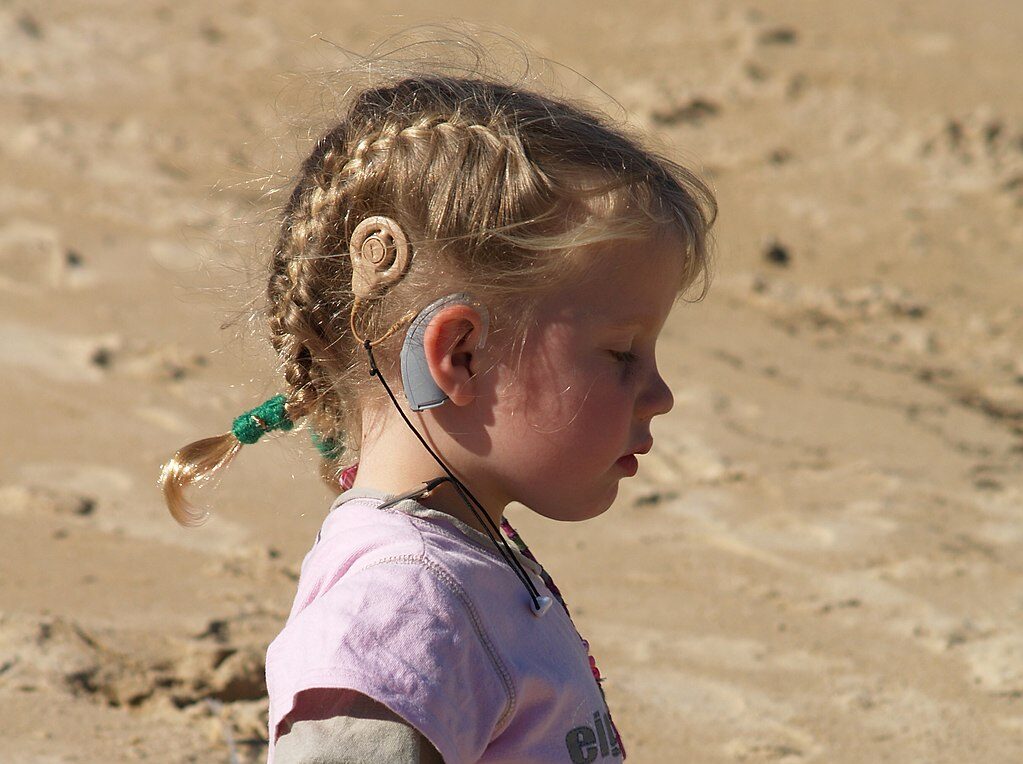Latinx children who are deaf or hard of hearing who grow up in homes where the primary language is not English may face additional challenges in English speaking countries. How can hearing health professionals best support these children while centering their needs?
By Lisa A. Goldstein
In 2020, according to the National Research Center on Hispanic Children & Families, almost 19 million Hispanic or Latino children lived in the United States. As of 2018, they accounted for approximately one-quarter of all U.S. children. And the immigrant experience remains central to many of their households, with slightly more than half living with at least one foreign-born parent.
Language fluency varies, the U.S. Department of Health and Human Services Office of Minority Health reported. Census data in 2019 showed that 71.1 percent of Hispanics speak a language other than English at home, with 28.4 percent stating they were not fluent in English.
What if a child in one of these families has hearing loss? In 2009, the American Academy of Otolaryngology – Head and Neck Surgery found that neonatal hearing loss – already one of the most common birth disorders in the United States – is especially prevalent among Hispanic-Americans and those from low-income households.
An AG Bell member who is a hearing health professional said, anecdotally, she was familiar with a number of of low-resource immigrant families with limited English who have a child with a significant congenital hearing loss, and who did not have access to early intervention services. She said these children often didn’t start amplification or learning language until early school-age, are primarily (broken) ASL-speaking, usually among family members with limited or no signing ability. Appointments often require a spoken language interpreter, sign language interpreter, and sometimes a CDI.
Unfortunately, this member does not know of any children in this situation who have caught up to their hearing peers using any language modality.
Bilingualism
Lauren Kelly, MS, CCC-SLP, LSLS Cert AVT, works in Frisco, Texas at Envision Hope Pediatric Therapy. She has a lot of experience with bilingualism. If a baby getting cochlear implants has zero language and the family speaks Spanish at home, “then services need to be provided in the language that they speak,” she said. As an AV therapist, she said the whole approach is teaching the families, so the professional has to figure out ways to use the home language.
Kelly used to have interpreters come with her or other bilingual SLPs. She also learned enough Spanish she could model. She would then model the language in English, with the parent following in Spanish.
“The [child who is deaf] in the bilingual home has to be able to communicate with their parents,” Kelly said. “So there is no way to avoid the home language; their parents are their primary caregivers.”
These children need to learn to speak English because of school and the community, but when children who are deaf are provided with hearing technology and the parents are pursuing spoken language, “then we need to be taking every step we can to support them in being able to communicate with their child,” Kelly said. That could be providing services in the home language.
“We just cannot take a one size fits all approach to intervention,” Kelly said. “I learned so much from working with Latinx families. I love their culture so much and found them to be so dedicated to their children and to doing whatever they need to help them. So we have to bring that same energy to the table when working with these families.”
Helping Families Learn English
One way in which professionals can help families learn English is to draw upon their knowledge of local resources, like ESL classes for adults. Depending on geographical location, some school districts provide everything in English and Spanish, and many offer classes to parents.
Parents also tend to learn English by participating in their child’s speech therapy. Kelly actually learned Spanish this way. One family that she worked with for a long time had a child who received implants at age one. His father spoke English, but was always at work, so Kelly dealt with the mother, who spoke no English when Kelly started working with them. At first, Kelly brought an interpreter because the company she worked for at the time had them due to the number of Spanish-speaking families they served.
Kelly’s process was to say something in English, have the interpreter tell the mother what she said, and have her say it in Spanish. When there’s a new listener, the language is simple, like, “Oh! It’s a cow. It says mooo.” The learning to listen sound was the same in both languages (with the exception of the rooster, so Kelly always did the Spanish rooster sound). The child got exposed to both languages, but the target was essentially the same at first (“moo”).
As time progressed, an interpreter wasn’t needed because Kelly could understand the mother’s Spanish, and she could understand Kelly’s English. Their abilities improved. Meanwhile, the child was six months into his listening journey, so they didn’t need to have a lot of complex language to teach him. “It just worked,” Kelly recalled. “If I needed to explain something more complex, like testing or something, I used an interpreter until one day I didn’t need that anymore because she had learned the language alongside her son. Her son was discharged from speech around first grade and was bilingual.”

